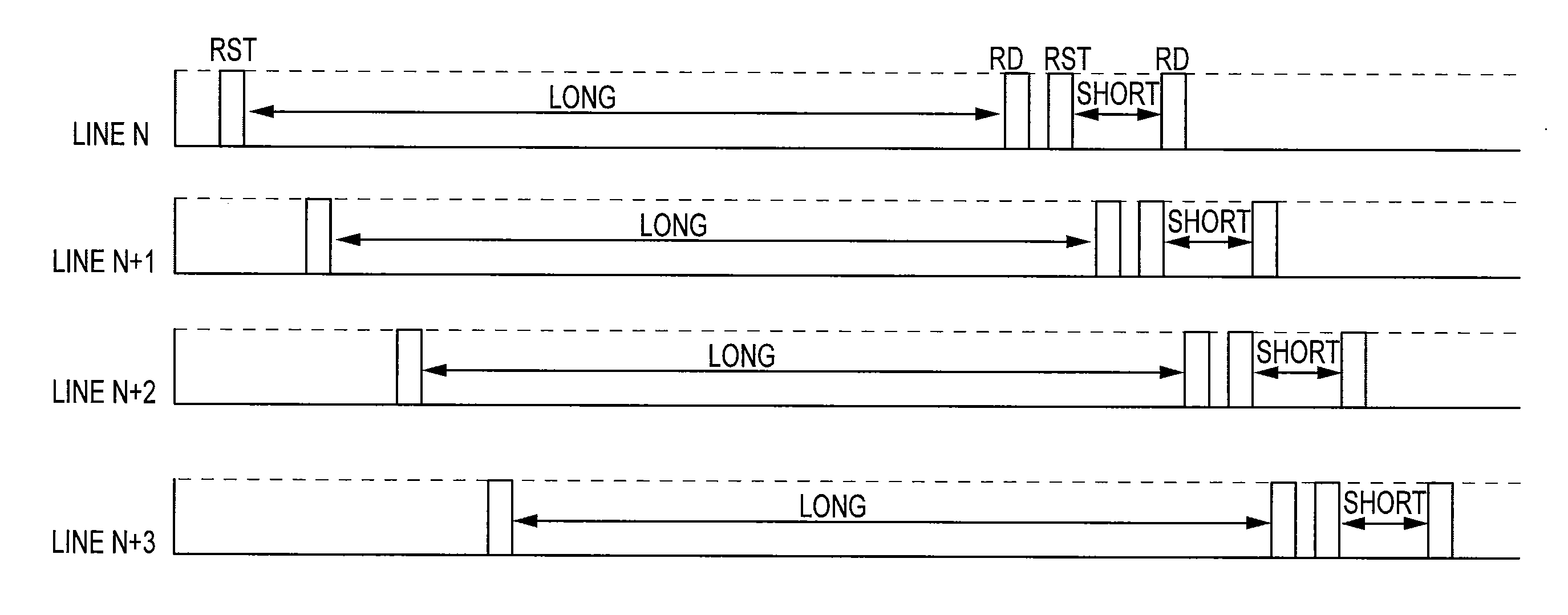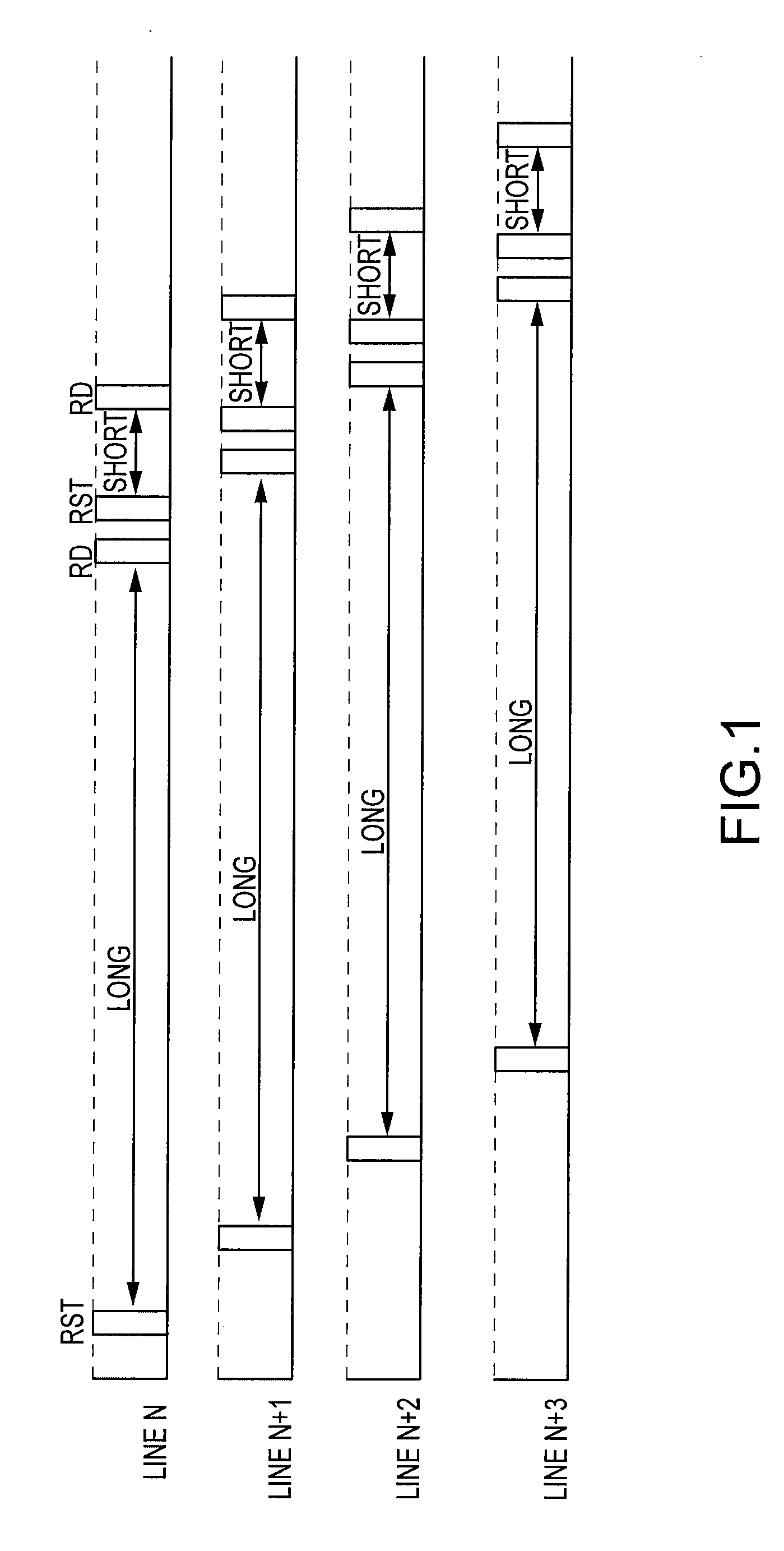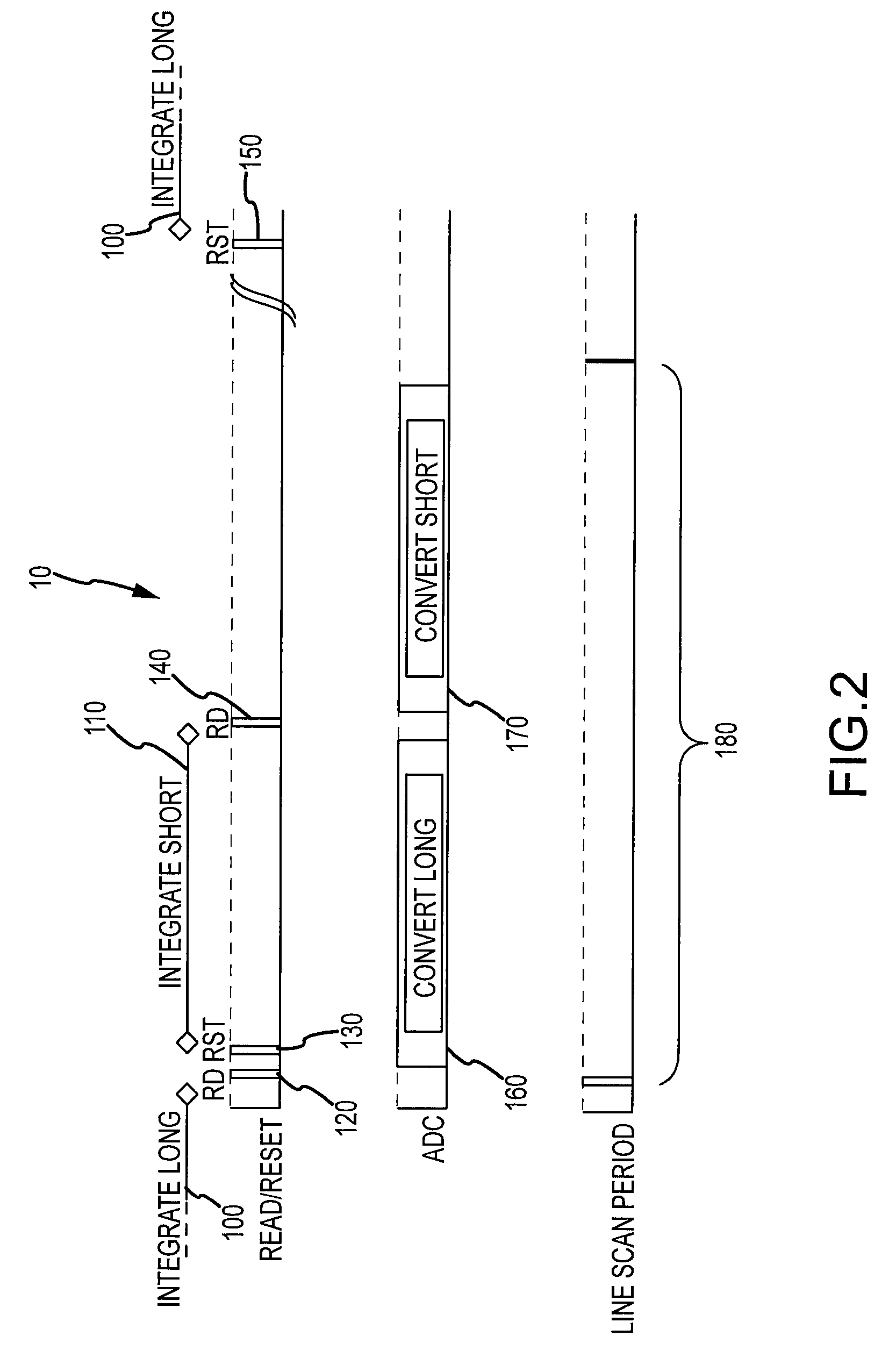CMOS Image Sensor With Increased Dynamic Range
- Summary
- Abstract
- Description
- Claims
- Application Information
AI Technical Summary
Benefits of technology
Problems solved by technology
Method used
Image
Examples
first embodiment
[0030]In the current invention, row conversions are done at twice the rate of row readout. The Short exposure proceeds until the analog to digital conversion of the long exposure is completed. Thereafter, the short exposure information is latched and converted to digital. The conversion completes before the next row is to be latched. The results of the long and short exposures of the current row are merged and output.
[0031]As the conversion of the long and short exposures is done serially in this first embodiment, the conversion circuits may be shared by the long and short exposure, and no extra buffer memory or ADC circuits are needed.
second embodiment
[0032]In a second embodiment, conversion of the long exposure takes the time of a full row scan, but the conversion of the short exposure takes half the time period of a row. This embodiment improves picture noise, but may require duplication of analog latching and conversion circuits. The buffer memory does not need to be duplicated, as the information on both exposures is ready at the same time.
third embodiment
[0033]In a third embodiment, both conversions take the time duration of a full row. This case yields the best image quality, but may require duplication of the conversion circuit as well as a full row buffer.
[0034]In other embodiments, each row is subject to three or more exposures of varying durations, for wider dynamic range and better SNR.
[0035]Having described embodiments of the present invention generally, attention is directed to FIG. 1, which depicts a basic timing waveforms of the present invention for four consecutive rows (“lines”). As can be seen, a first reset pulse (RST) for each row designates the start of a long integration period. Following this period, the row is read (RD), reset again for a short exposure period, and read. This process, shifted in time, repeats for subsequent rows, employing a “rolling shutter” technique.
[0036]For double sampling CMOS image sensors, a read process includes a series of events: resetting a floating diffusion; a first read; a transfer...
PUM
 Login to View More
Login to View More Abstract
Description
Claims
Application Information
 Login to View More
Login to View More - R&D
- Intellectual Property
- Life Sciences
- Materials
- Tech Scout
- Unparalleled Data Quality
- Higher Quality Content
- 60% Fewer Hallucinations
Browse by: Latest US Patents, China's latest patents, Technical Efficacy Thesaurus, Application Domain, Technology Topic, Popular Technical Reports.
© 2025 PatSnap. All rights reserved.Legal|Privacy policy|Modern Slavery Act Transparency Statement|Sitemap|About US| Contact US: help@patsnap.com



